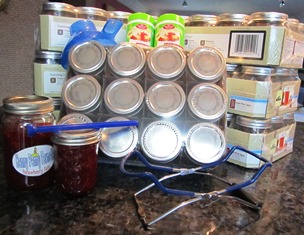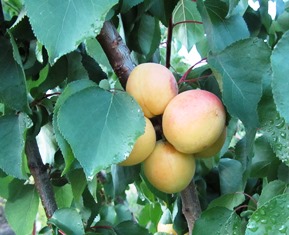Hypoallergenic Label for Dogs Might Be Misleading
Finding a dog that won’t cause wheezing and sneezing sounds like the perfect solution for families with allergies. But apparently the notion that some breeds–like poodles, labradoodles, terriers, shi tzus, or short- haired dogs–are hypoallergenic isn’t quite the case.
Allergic rhinitis is a common malady that affects 600 million people worldwide (200 million have asthma alongside the rhinitis). Pet allergies bear a significant burden as a common trigger for allergic rhinitis. See http://www.ncbi.nlm.nih.gov/pubmed/20031002
In an article from 2013 in the San Francisco Chronicle, author Kathryn Roethel cited a study by scientists in Detroit, who conducted research involving 173 single-dog homes. See, http://www.kathrynroethel.com/mythbusters/hypoallergenic-dogs-not-allergy-free-study-says
The researchers vacuumed floors of bedrooms in the Detroit area homes. Their goal was to find samples of a protein in pet saliva that caused human allergies to dogs, namely, canis familiaris 1. That allergen was found in 163 of the 173 homes the researchers tested. And dogs (labeled hypoallergenic), according to Roethel “averaged the same amount of the protein as non hypoallergenic dogs.”
Pet owners could reduce the amount of the allergen canis familiaris 1 by having tile and wood floors (which showed slightly less of the allergen in the study) than other floor materials such as carpet.
Also, dog owners could limit levels of the allergen by limiting the rooms that their dog was allowed in.
Keeping dogs outside did not eliminate the presence of canis familiaris 1, although indoor levels could be reduced.
An different study by the same research team indicated the presence of “canis familiaris 1 in approximately half of homes without dogs,” noted author Roethel, “possibly because dogs had lived there in the past.” To read the study, see http://1.usa.gov/1b7F5B4.
The solution is not to get rid of the family dog, but to find ways to reduce exposure to the allergen, canis familiaris 1. Talk with your allergist or family physician about options. And if you are thinking about becoming a dog owner, be aware that the hypoallergenic label might have little to no relevance.
Sun Drying Apricots
My husband supports my obsession for making jam and otherwise preserving summer’s bounty. Two weeks ago he brought home five cases of organic apricots and cherries from the farmers market and cases of canning jars. Yesterday he brought me seven more cases of canning jars with rings and lids.
The fruit on the apricot trees here on the farmette is ripening now. So are the yellow and small red plums. The figs and apples will come later but the trees are already heavily laden. I have canned dozens of jars of jam. I think I will dry some apricots.
Sun drying apricots requires 2 to 4 days of hot sun (preferably above 98 degrees) for the fruit to lose its moisture and turn leathery. Luckily, our local weather forecast is temperatures at the end of next week to hover in the mid- to upper 90 degrees Fahrenheit. High temps and low humidity are key to successful sun drying of fruit.
Here’s the process I use.
Step 1. Gather together the equipment such as a drying table; trays to hold the fruit; and cheese cloth or a screen to protect from insects, flying leaves, dust, birds, and the like.
Step 2. Wash the fruit, cut into two pieces, and remove the pits.
Step 3. Dip fruit into crystalline ascorbic acid–1 teaspoon to 1 cup of water to prevent fruit browning. Or, dip fruit for 3-5 minutes in lemon, lime, or orange juice. But after two batches are dipped, replace with fresh juice. Drain well after dipping.
Caveat: Sulfuring of apricots and other dried fruits produces an excellent product, but is to be avoided if you suffer from asthma because it can trigger an asthma attack. I stay away from sulfured products precisely because of this reason.
Step 3. Place fruit in a single layer. Similar size pieces of apricot will dry in approximately the same length of time.
Step 4. Cover trays with cheesecloth or a screen. Test for perfectly dried fruit–no moisture present when an edge is cut. The fruit will be pliable.
 Facebook
Facebook Goodreads
Goodreads LinkedIn
LinkedIn Meera Lester
Meera Lester Twitter
Twitter







